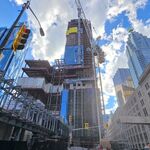Not to excuse the government on this file, but I think some context is needed. Drinking water advisories issued by the federal government are often cautionary, often because the system, if there is one, lacks a treatment capability. This would be akin to having an advisory being slapped on most cottage water systems, or, in my case, on our well water system. I notice that Wahta is listed. That community has no 'system', it's ~160 residents are strung along about 10km of Muskoka Rd. 38 on individual wells. Unless there is an inherent problem with the ground water, this would be millions thrown at a problem that doesn't exist. No doubt there are some communities with actual water problems. In some cases, it's not so much the problem with the source water but that it has been tainted by a malfunctioning or inadequate sanitary system.
For the remote communities in n/w Ontario and northern MB and SK, every single system has to have a bespoke design, all supplies and equipment has to be trucked in on winter roads, crew has to be accommodated, and on and on.
I imagine no communities are shown in northern Quebec because they are self governing after Hydro Quebec paid them several billion.




